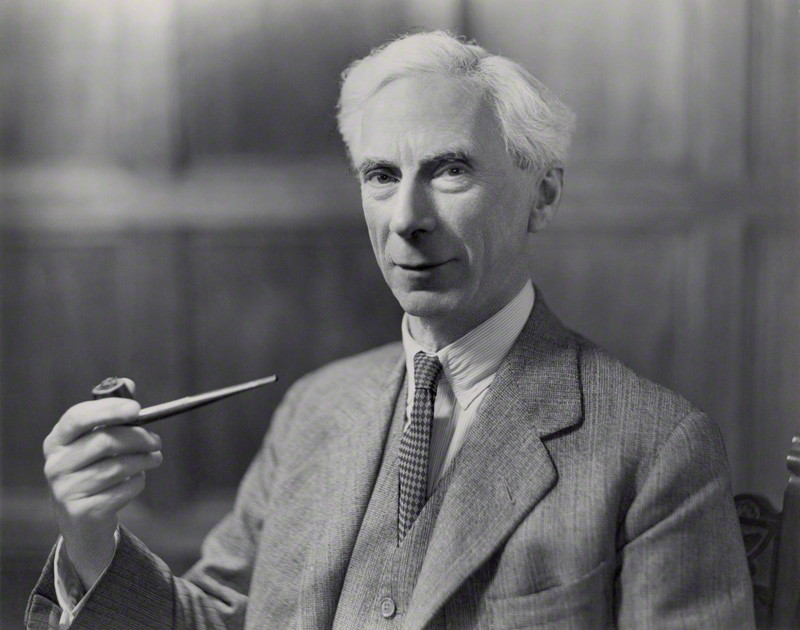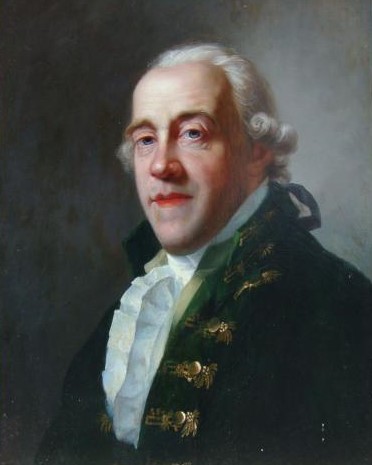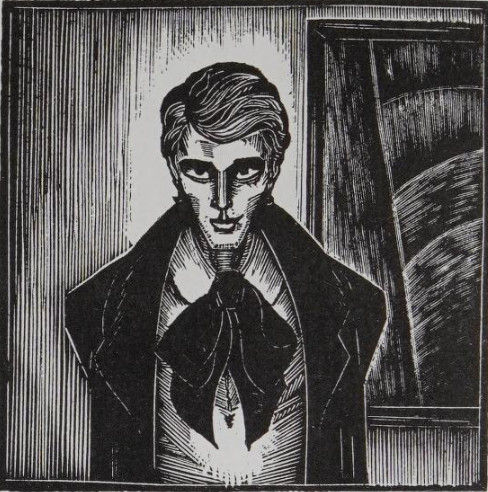A conference is attended by 1,000 delegates from various countries. It’s known that any three delegates can speak together without help, though one of the three may have to serve as interpreter for the other two. Prove that all the attendees can be accommodated in double rooms so that the two occupants of each room can speak to each other.
Author: Greg Ross
First Impressions

The beginnings of Algebra I found far more difficult [than Euclid], perhaps as a result of bad teaching. I was made to learn by heart: ‘The square of the sum of two numbers is equal to the sum of their squares increased by twice their product.’ I had not the vaguest idea what this meant, and when I could not remember the words, my tutor threw the book at my head, which did not stimulate my intellect in any way.
“Unified Field Theory”
In the beginning there was Aristotle,
And objects at rest tended to remain at rest,
And objects in motion tended to come to rest,
And soon everything was at rest,
And God saw that it was boring.
Then God created Newton,
And objects at rest tended to remain at rest,
But objects in motion tended to remain in motion,
And energy was conserved and momentum was conserved and matter was conserved,
And God saw that it was conservative.
Then God created Einstein,
And everything was relative,
And fast things became short,
And straight things became curved,
And the universe was filled with inertial frames,
And God saw that it was relatively general, but some of it was especially relative.
Then God created Bohr,
And there was the principle,
And the principle was quantum,
And all things were quantified,
But some things were still relative,
And God saw that it was confusing.
Then God was going to create Furgeson,
And Furgeson would have unified,
And he would have fielded a theory,
And all would have been one,
But it was the seventh day,
And God rested,
And objects at rest tend to remain at rest.
— Tim Joseph
Accord

“Everyone believes in the normal law, the experimenters because they imagine that it is a mathematical theorem, and the mathematicians because they think it is an experimental fact.” — Gabriel Lippmann, in a letter to Henri Poincaré
(Thanks, Tom.)
Unquote

“A portrait is a painting with something wrong with the mouth.” — John Singer Sargent
A Story Without Words

Subtitled “A Novel in Woodcuts,” Lynd Ward’s 1929 parable Gods’ Man unfolds in images, making it an important forebear of the modern graphic novel. A young artist makes his way to the big city, where a masked stranger gives him a magic paintbrush. The adventures that follow remark on the roles of love and commerce in an artist’s life; in the end the stranger returns to claim a reward.
Despite its unusual format, Ward’s book sold more than 20,000 copies during the Depression, and he followed it up with five more wordless novels. When he died in 1985, he was at work on an ambitious seventh, which Rutgers published in 2001.
Brave New World
We instinktivly shrink from eny chaenj in whot iz familyar; and whot kan be mor familyar dhan dhe form ov wurdz dhat we hav seen and riten mor tiemz dhan we kan posibly estimaet? We taek up a book printed in Amerika, and honor and center jar upon us every tiem we kum akros dhem; nae, eeven to see forever in plaes ov for ever atrakts our atenshon in an unplezant wae. But dheez ar iesolaeted kaesez; think ov dhe meny wurdz dhat wood hav to be chaenjd if eny real impruuvment wer to rezult. At dhe furst glaans a pasej in eny reformd speling looks ‘kweer’ or ‘ugly’. Dhis objekshon iz aulwaez dhe furst to be maed; it iz purfektly natueral; it iz dhe hardest to remuuv. Indeed, its efekt iz not weekend until dhe nue speling iz noe longger nue, until it haz been seen ofen enuf to be familyar.
— Walter Ripman and William Archer, New Spelling, 1948
Cotes’ Theorem

The product of the distances from N equally spaced points on a unit circle to a point M that lies on the x axis at distance x from circle origin O and on a line passing through the first point, A0, on the circle equals 1 – xN.
Discovered by Roger Cotes (1682-1716). Here’s a proof.
A Tour of England
From reader Dave King:
A certain young lady of Prinknash
Was looking decidedly thinknash.
Her diet restriction
Had proved an addiction
And caused her to swiftly diminknash.
A hungry young student of Norwich
Went into his larder to forwich.
For breakfast he usually
Had bacon or muesli
But today he would have to have porwich.
An ethical diner at Alnwick
Was suddenly put in a palnwick
“This coffee you’ve made
Are you sure it’s Fair Trade?
And I must insist that it’s orgalnwick!”
A Science don, Gonville and Caius,
Kept body parts in his deep fraius.
He didn’t remember
And one dark November
He ate them with cabbage and paius.
A Frenchman now living at Barnoldswick
Was terribly partial to garnoldswick.
The smell of his breath
Drove one lady to death;
She fell from the ramparts at Harnoldswick.
A forceful young prisoner from Brougham
Was confined to a windowless rougham,
So, venting his feelings,
He bashed through the ceiling,
Dispelling the gathering glougham.
(Thanks, Dave.)
True Love
The 1937 edition of Webster’s Universal Dictionary of the English Language contains this peculiar entry:
jungftak (jŭngf´ täk) n. a fabled Persian bird, the male of which had only one wing, on the right side, and the female only one wing, on the left side; instead of the missing wings, the male had a hook of bone, and the female an eyelet of bone, and it was by uniting hook and eye that they were enabled to fly, — each, when alone, had to remain on the ground.
This appears to be neither an error nor a trap to catch copyright thieves. When scholar Richard Rex asked about it, an associate editor at the dictionary replied, “[W]e have gone through a good many sources and jungftak simply does not show up. It is quite a curiosity, for the various accounts of Persian mythology do not describe such a bird even under another name.” The entry disappears from editions after 1943. Probably it was a joke, but the story behind it is lost.
(Richard Rex, “The Incredible Jungftak,” American Speech 57:4 [Winter 1982], 307-308.)
06/19/2024 UPDATE: Reader Nick Hare offers another fantastic bird: the oozlum, which flies in smaller and smaller circles until it disappears up its own backside. Wikipedia observes drily that this behavior “adds to its rarity.”
06/21/2024 UPDATE: Wow, this is really interesting. Reader Edward White informs me that there’s a bird in Chinese mythology, the biyiniao or linked-wing bird, that closely resembles the jungftak — each biyiniao has one eye and one wing, so they have to pair up to fly. The bird is used as a symbol of married love in poems. Can this be a coincidence?
